Diversity thrives in India and that can be seen in everything from food to festivals. Just like every other festival, even Navratri is celebrated in different ways in different states. For states in North Navratri means fasting, for East like Bengal it’s about the holy Durgo Puja while in Gujarat it’s about playing garba. But do you know how the southern part of India celebrates it? Here’s a sneak peek into it!
Here’s How South Indians Celebrate Navratri
1. Karnataka
Gombe Habba
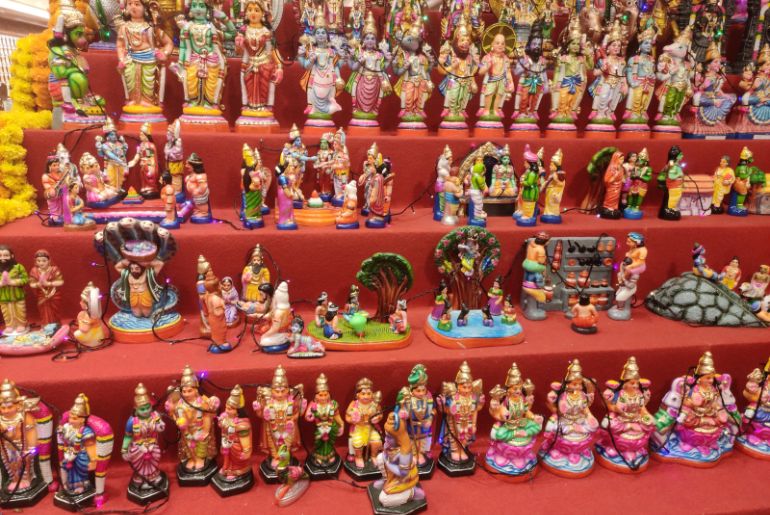
Every year, eager people participate in the Gombe Habba or festival of dolls during Dasara or Navaratri. A variety of dolls are gathered for the Festival of Dolls and displayed on a multi-stage platform. Each person or family participating in Gombe Habba may choose a theme or a legendary story to center their doll collection on for that particular year.
Frequently, doll collections feature prominent representations of the theme’s leading couple or other key figures. Around nine dolls are typically arranged in several layers to signify the nine days of Navratri.
Most often, the most notable dolls are displayed in the top-most racks, while the dolls that symbolize minor or supporting roles or additional plot lines are shown at the bottom. To improve visual appeal, light decorations, lamps, garlands, and other decorations are used.
Dasara

The mythical event known as “Mysore Dasara,” which honors goddess Chamundeswari of Chamundi Hill, a manifestation of goddess Durga who slew the formidable demon Mahishasur, falls around the same time as Navratri. During Dussehra, the palace in Mysore is embellished with lights and flowers and hosts the famed “Jamboo Savari” procession. It involves elephant parades in which the Chamundeswari deity is carried by one of the elephants.
Mookambika Temple
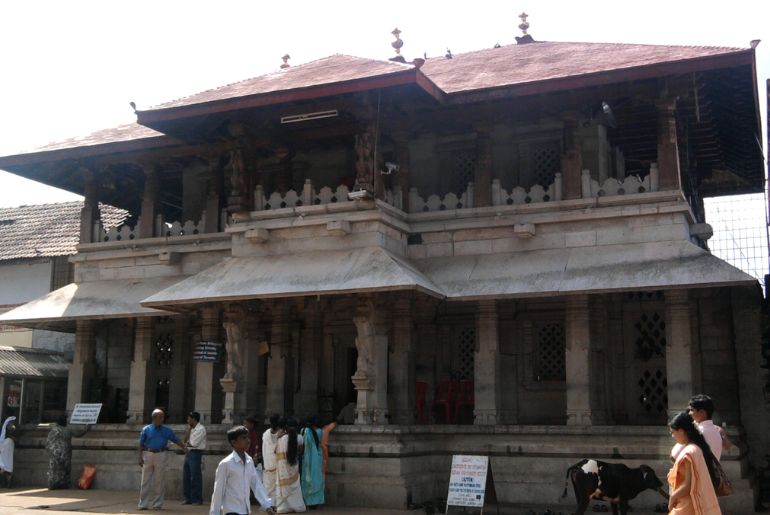
The temples and cultural attractions in Karnataka are decorated for Navratri. During this time, there are a lot of regal processions that are performed. People exchange gifts such as coconuts, candies, etc. Additionally, numerous episodes from numerous tales and epics, including the Mahabharata and Ramayana, are acted out in the regional plays. Additionally, people go to the well-known “Mookambika Temple” in Udupi.
2. Andhra Pradesh And Telangana
Bathukamma
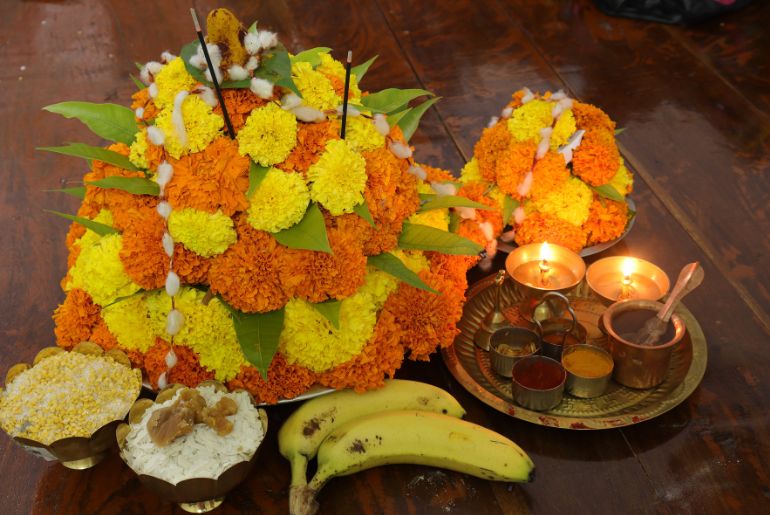
In Andhra Pradesh, Durga Puja is observed as “Bathukamma Panduga,” which means “Come Alive Mother Goddess.” The nine nights are devoted to the good-natured goddess Shakti, who is said to have bestowed marital bliss upon them. With seasonal flowers, women create a stunning flower stack called “Bathukamma.” For nine days, women dress up in new attire and jewelry to perform puja in front of the Batukamma. Unmarried women attend the group worship in search of the ideal partner. Batukammas are let adrift in a lake or any water body on the last day.
Also Read: What Is Golu, The South Indian Tradition Of Displaying Dolls & Figurines During Navratri?
3. Tamil Nadu
Bommai Golu
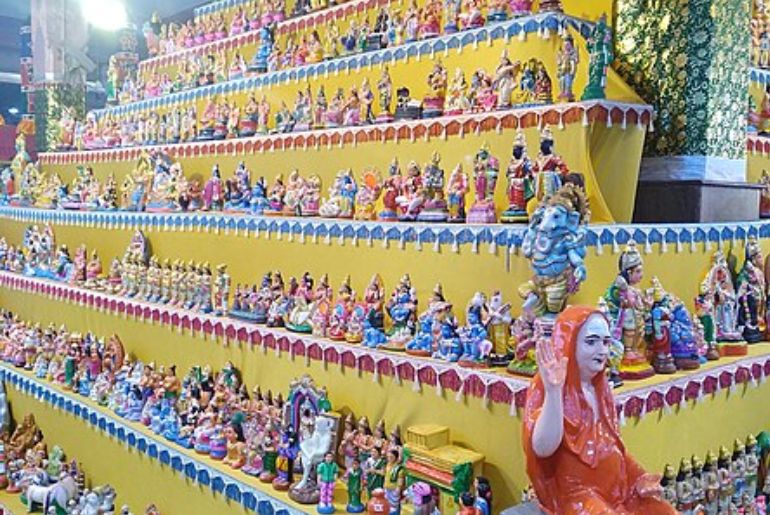
Goddess Lakshmi is honored for the first three days of the nine-day festival in Tamil Nadu, while Goddess Durga is honored for the fourth, fifth, and sixth days, and Goddess Saraswati is honored for the final three days.
Golu is a nine-tread staircase that symbolizes the nine Navratri nights. Beautiful dolls and Golu idols, which are representations of gods and goddesses, adorn each staircase. Clay, marble, and wood are used in the creation of these idols. In addition, Golu keeps musical instruments and books in front for worship. As per the customs, one of the idols from the decorated Kolu dolls is buried on the final day of Vijayadashami, which marks the conclusion of Navratri. The remaining Kolu dolls are passed on to the next generation.
4. Kerala
Pooja Vaippu
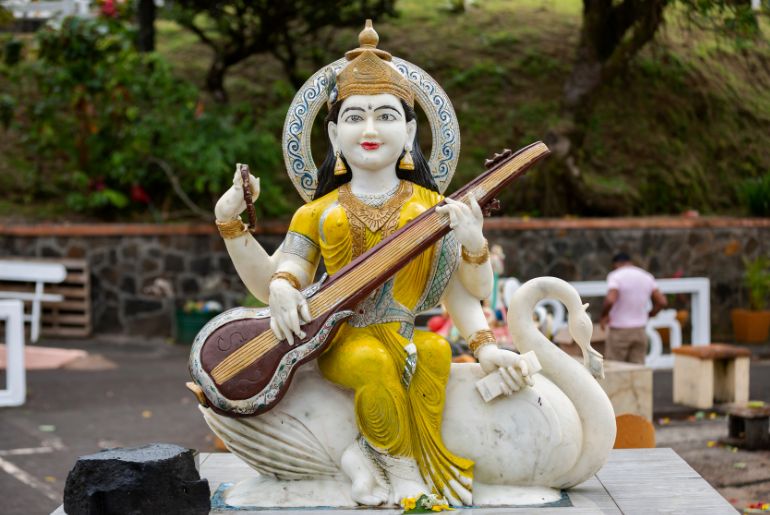
Starting with the evening of Durgashtami, when “Pooja Vaippu” is performed, the final three days of Navratri are revered. People perform Saraswati Puja or Ayudha Puja on the day after Mahanavami, during which they worship books, musical instruments, and items related to their line of work.
Books and tools are taken out on the day after Vijayadasami; this is called “Puja Eduppu.” A youngster (between the ages of 2 and 6 years) is launched into learning on this day, known as “Vidhyarambam,” and as part of the ceremony, the kids are asked to draw alphabets on rice or sand.
Also Read: What Is Typically Served In A Navratri Thali? 6 Dishes And Their Importance
How is Navratri celebrated in your state?
Cover Image Courtesy: @anuragrajpurohit
For more such snackable content, interesting discoveries and latest updates on food, travel and experiences in your city, download the Curly Tales App. Download HERE.
Good news! We are on WhatsApp! Subscribe to Curly Tales WhatsApp Channel to stay up-to-date with exclusive content and BTS. Join HERE.

